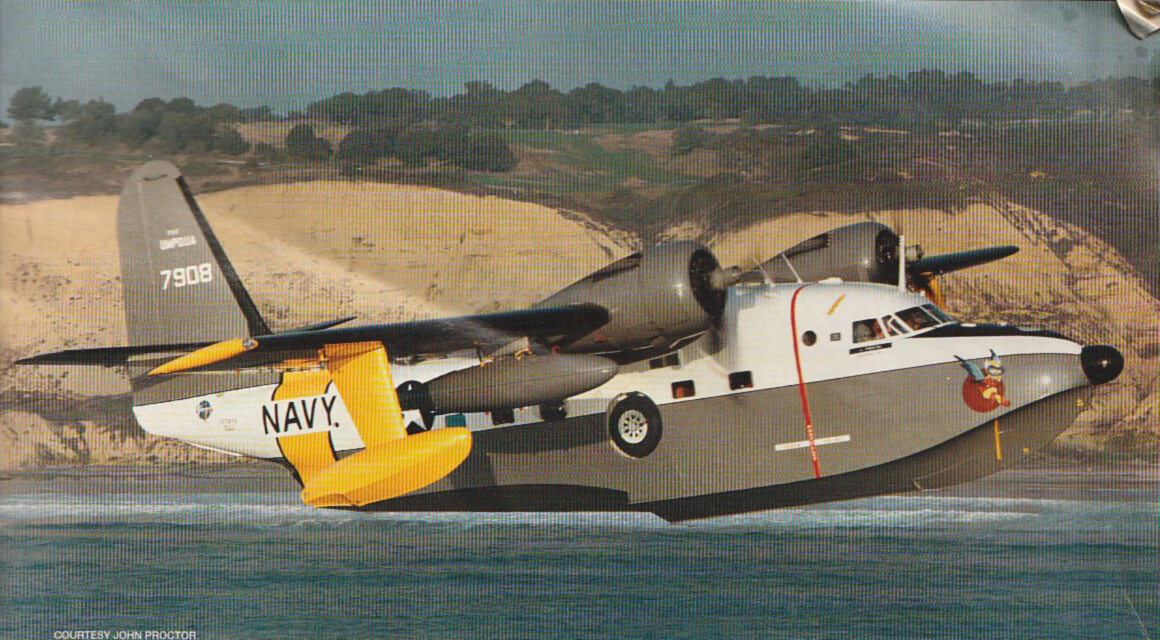
By Jack Morrissey
Regional Editor
There’s a little Walter Mitty in most of us. As a youngster, I devoured everything written by Richard Halliburton. His books on the exotic places to which he traveled kept me fascinated for hours, and like a lot of others, I fantasized about traveling someday to these strange lands.
Some of us just keep on fantasizing as Walter Mitty did. Remember Mitty’s “tapockata, tapockata, tapockata?” But a few others are driven enough to make the dream come true. While I was in New Zealand, I met a couple that “did” the dream. John and Joyce Proctor of San Diego, had been on a journey around the Pacific Rim for the past sixteen months, and still had a few places to visit. They brought their aircraft to the Wanaka Air Show, held in Wanaka, New Zealand every other year. Their aircraft was a Grumman Albatross, fitted out interior-wise as home should look. They figured if it was going to be their home of the next year-and-a-half to two years, it was going to be as comfortable as possible, look pleasing to the eye, and above all, it must have a washer/dryer. They didn’t anticipate finding too many laundries or dry cleaners at some of the places they intended to visit.
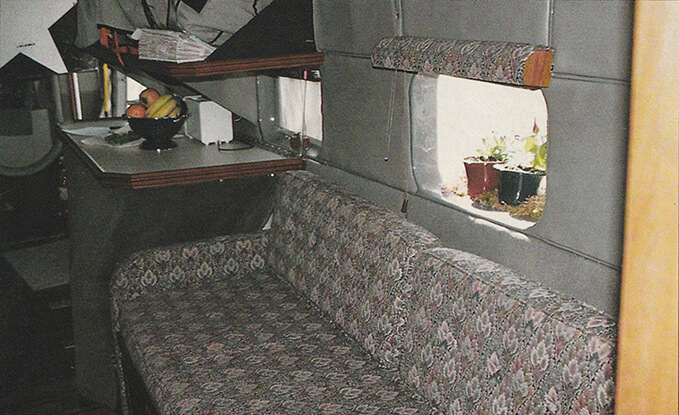
This Albatross was manufactured by the Grumman Aircraft Corporation in 1954. It weighs in at just over 30,000 pounds, has an 80 foot wingspan, is 62 feel long and 26 feet tall. Two P&W 1820s with two-speed superchargers develop 1425 horsepower each at 52 inches of manifold pressure and rpm at 2700. Total fuel comes in around 1,680 gallons if drop tanks are used. Oil tanks hold 29 gallons each. Thirty-one inches of manifold pressure will ensure a fuel bum of about 120 gallons per hour. So. if you’re not in a hurry, pull the power back. The aircraft has three anchors, 60 feet of chain, along with 2,000 feet of line for mooring or anchoring. GPS does most of the navigation, along with a panel that holds dual HS Is, four-color radar with terrain mapping overlay, a Stromscope, radar altimeter and a marine depth finder.
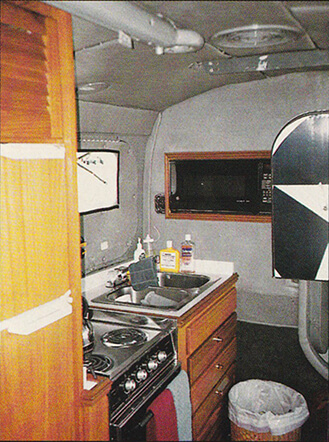
It’s the interior that knocks your socks off. The entire cabin was outfitted as one would refurbish an antique yacht. The woodwork for the cabinets is teak and black walnut. Every bit of space is uniquely utilized. How about a complete galley, heating and air conditioning system, queen size bed and double size berths, plus a state-of-the-art 486 computer system? To go along with a Honda trail bike, there is a shipboard crane for loading and unloading and a dive compressor for the scuba gear sets. And the bathroom, always so important, has a tub and two showers. A 9KW alternator, driven by a 16 hp V twin, furnishes power and fir fresh water there is a desalination and water purification plant that will deliver forty gallons per hour. All garbage was incinerated on board. Not too shabby!
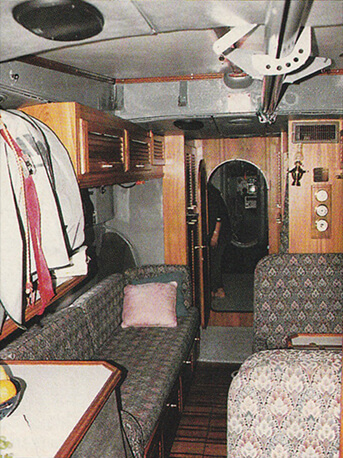
This isn’t so much an airplane saga, but a story of two people, who decided to “go for it.” The Albatross became their transportation, their home, their refuge, and their “magic carpet” that carried them to many strange and exotic places. It carried them to some great places, with fair weather surrounding them. It also carried them to some not-so-great places, through some weather not so fair. It wasn’t all “beer and skittles,” as some say, but all of those tense moments that were survived only gave greater pleasure to the serene moments that also came their way.

What kicked the trip in the rear end and got it off the ground was an in-flight oil loss on Joyce’s Cessna 210 coming back from Carson City over the Sierra Mountains. The oil line had unscrewed itself at the rear of the engine and subsequently dumped all the oil out. Fortunately, they were above 13,000 feet and heading for Fresno for a cup of coffee. John had quite a bit of glider time, so when the engine “went south,” it turned the 210 into one big glider. To shorten this story, John was intending to put the 210 on a ridge, when Center indicated that they should be over an abandoned air strip. John came down over a ridge (remember now, they had no power) and caught a wave sink on the other side of the ridge. There they were, inside a canyon, too high, too fast and searching desperately for this air strip. Finally coming around a corner, there was the strip. They were still too fast, too high, but the sink wave assisted. Not the best of landings, but they did get down in one piece. The sheriff’s department was notified and sent a plane to take then out. That night over dinner, John said to Joyce. “You know, we shouldn’t be here tonight. But we are. I think it’s time to sell the business, buy the Albatross and set sail.” The rest became history.
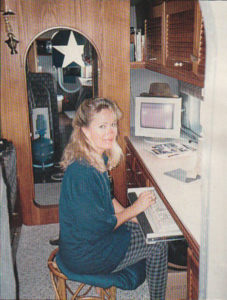
I wish I had space to tell all of the tales that went into making up this voyage. I’m sure at some future date the entire story, from beginning to end, will be published. And it will undoubtedly be one of those books that, once you start. you won’t be able to put it down. John Proctor is known for making the first west to east crossing of Russia since Lindbergh had done it in 1937. John. Rick Roessler (who did all the photography) and the famed Russian pilot Viktor Smolin flew John’s Cessna 185 across the entire Russian landscape. The book of this adventure is entitled “Viktor. Vodka and Raw Fish.”
I asked John to give me some of the good aspects of their Pacific Rim journey, as well as some of the bad things that happened. Both sides of the coin showed up on tosses by Mother Nature. In the same vein, among all of the volunteers that made the trip possible, all manner of people tossed their particular brand of input into the project. Two or three made outstanding impacts on John and Joyce. One of John’s nieces, Julia Galleher, without letting John or Joyce know, obtained her private pilot’s license and upon joining John and Joyce in New Zealand, casually informed them that she was now ready to help with the flying. Joyce Proctor is one of only two women pilots in the United States that has a type rating for the Albatross. Another volunteer that John mentioned was an elderly woman whom John referred to as “Mother Gopher.” The name came from her ability to move around in the bilges, doing harness work or whatever else cramped up. John was more than emphatic about the tremendous amount of assistance he received from people they encountered on this journey. The trip routing primarily was Canadian Northwest Territories, Alaska, Russia, Japan, Okinawa, the Philippines, Australia, New Zealand, Vanuatu, Fiji, Western Samoa, American Samoa, Christmas Islands, Hawaii, San Diego, then on to the EAA Convention at Oshkosh. A total of over 35,000 miles (nautical) was traversed. Sixteen months of travel were logged, totaling 295 hours, of which 20 became hard IFR. Fifty water landings were made, of which nine were made in an ocean.
The Albatross is noted for heavier control input than some other amphibious aircraft because of the a shorter wing. It took a while getting used to synching the props, as there was no automatic prop synch on this aircraft. Changing speeds or altitude always mandated correcting the prop synch. John finally discovered that if the props went out of synch during turbulence, all he had to do was to wait a few minutes and the prop managed to work themselves back into synch.
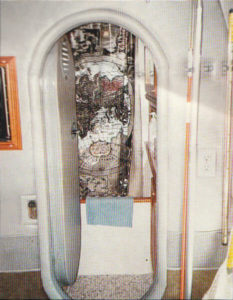
Some of the good points of the trip are noteworthy. John said one great highlight was the look on the pilots’ faces when they landed the Albatross in the river at Perth, Australia. He stated that closing the river at Perth was like closing New York harbor. They opened up the Albatross to the veterans of the Catalina Club, Aussies who flew PBYs during World War II. People came up to the Albatross, with tears in their eyes, saying, “If it weren’t for this airplane, I wouldn’t be here today.” These were veterans who were fished out of the Gulf of Tonkin or other spots during the Vietnam War. Some former PBY pilots had the same dream that John and Joyce were now fulfilling. Landing on the southern lakes on the South Island of New Zealand was another high point. It’s similar to Colorado, in that you have snow-covered peaks surrounding breath-taking valleys, and these huge mountain lakes. Landing on glassy water amongst the snow-covered mountains is a once-in-a-lifetime high, according to John and Joyce. These are but a few instances of what made this trip a memory that will last for more than one lifetime.
However, there were a few “bummers” according to the Proctors. Their first incursion into Russia was fraught with overtones of spying (“Why are you bringing a military aircraft into Russia? and “What are you doing in Russia?”). A mix-up on the time zone had the Proctors in arriving early so the Russians assumed that with the “stars and bars” on the aircraft, it was still serving with the U.S. military. While the USSR may have disintegrated as a country, the normal paranoia still stayed. Coming out of Russia, on the Chinese border, John ran into some really heavy weather. The transfer pump decided to quit and they were running on Russian gas, which has a lower octane than U.S. gas. John then proceeded to pull fuel out of the floats by cross-feeding with the engine and the boost pumps. However, with this procedure, some of the fuel goes into the mains and some is burned by the engines. With no gauge to monitor, it was impossible to tell how much fuel they were transferring. One of the engines quit about ten minutes before John had anticipated. It shut down, shook, banged and snorted, and the aircraft dropped about 2,000 feet before John got a restart. He then switched the other tank to the main tank immediately, knowing that engine was going to go. Then the wire going to the oil temperature gauge from the cannon plug broke, sending the oil temperature into the red. Assuming they were having a real problem, John turned toward the Japanese mainland, looking fora place to set down.
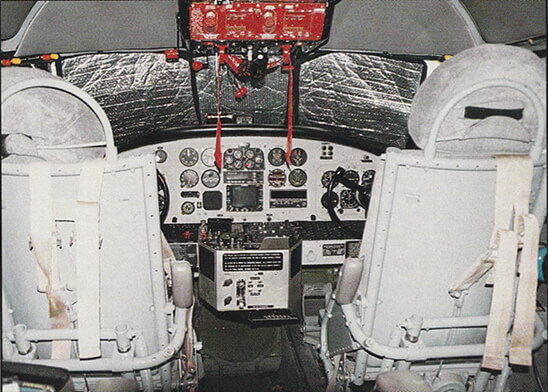
The Japanese, not knowing what was on their radar screen, vectored one of their F-15s to the Albatross. The F-15 then proceeded to make three runs at the Albatross. John noticed that the rockets were yellow, and not the blue training rockets, so the F-15 was armed to the teeth. On the third run, with the gear hanging down, he bounced alongside the Albatross, wagging his wings. John couldn’t determine if he was wagging his wings, trying to force them down, or just bouncing from all the turbulence. He must have figured out that John and Joyce were the good guys, so he departed. At that point, the pucker factor must have dropped considerably for those on the Albatross. They arrived in Tokyo in what John said was, “a hell of a storm.” With the mountains around Tokyo rising to a little over 9,000 feet, it made for an interesting approach.
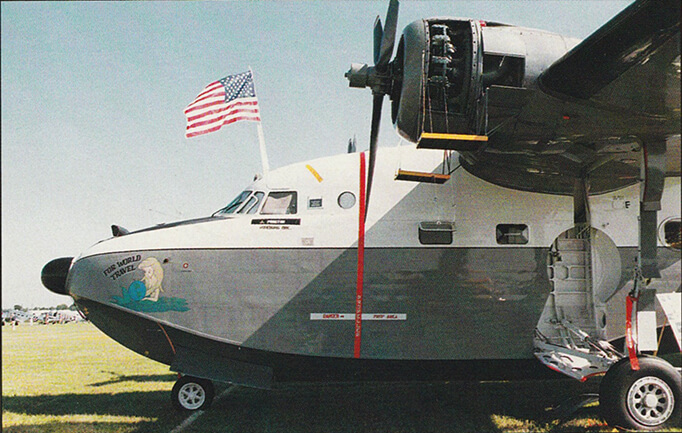
The next stressful situation for the Proctors was at Mindanao in the southern Philippines. The night before they were to depart, rebels blew up the microwave towers and a lot of gunfire was exchanged between the rebels and the government forces – the Albatross was at a Philippine Air Force base. There were live bombs around the Albatross, so with some mortar activity the stress level increased dramatically. John launched the next morning — no weather briefing, no nothing — and no sooner did he get offshore when a prop light came on. Returning to the base, 5,000 pounds over gross landing weight, he put some oil in the prop and launched again. Australian officials were never notified the Albatross was on the way and nine and a half hours later, after flying through one of the worst rainstorms that he had ever seen, they arrived in Darwin, Australia only to have “Murphy’s Law” jump up. He forgot to lock the refrigerator. After doing some photo runs around the harbor and landing, John noticed he had put a new coating on the floor by the refrigerator — mayonnaise, ketchup, etc. Needless to say, Joyce was not a happy camper. There are over a hundred small stories that go into the making of one grand adventure. Unfortunately, we just don’t have the room to list all of them. But if you will pick out your favorite chair, sit back and let your imagination go to work, I think you’ll be able to fly along fora little while on this magic carpet. If the full story gets into print, we will notify you as to where the book is available. Ain’t life grand?!
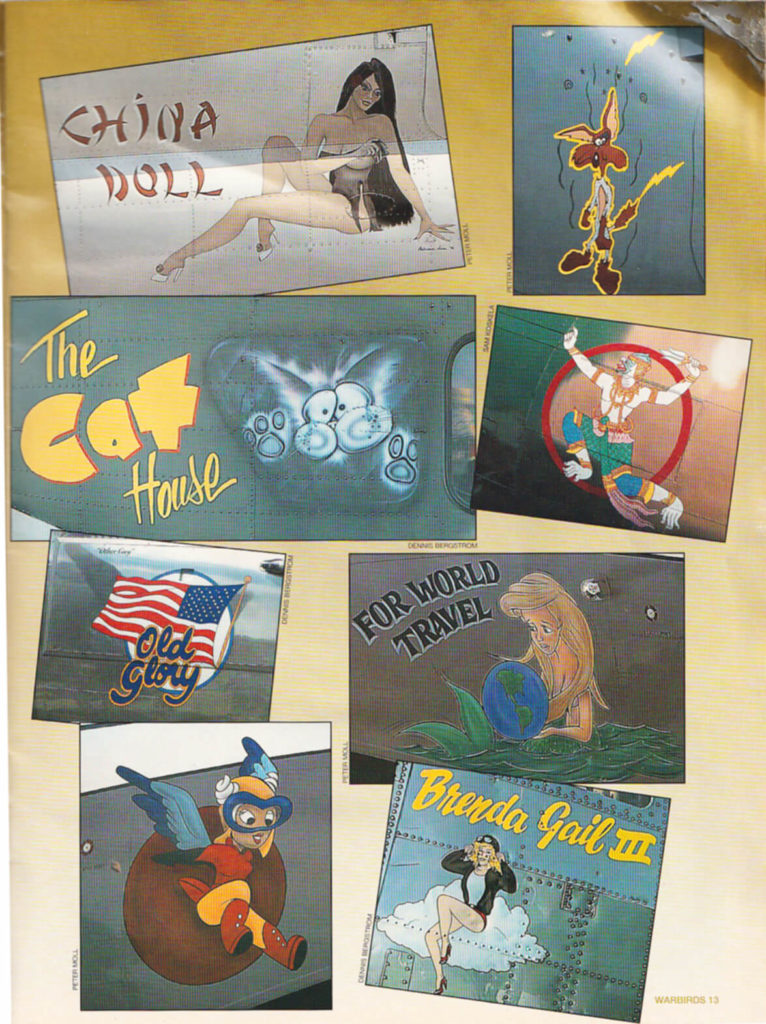
Watch the YouTube video of the Grumman HU-16 make a dramatic landing in San Diego.
